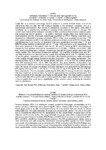Please use this identifier to cite or link to this item:
http://www.alice.cnptia.embrapa.br/alice/handle/doc/661983| Title: | Effect of the concentration by reverse osmosis of grape juice on its aroma profile. |
| Authors: | SANTANA, I.  BIZZO, H. R.   MATTA, V. M. da   CABRAL, L. M. C.   |
| Affiliation: | ISABELLE SANTANA, UFRJ; HUMBERTO RIBEIRO BIZZO, CTAA; VIRGINIA MARTINS DA MATTA, CTAA; LOURDES MARIA CORREA CABRAL, CTAA. |
| Date Issued: | 2009 |
| Citation: | In: EUROPEAN FEDERATION OF FOOD SCIENCE AND TECHNOLOGY CONFERENCE, 2009, Budapest. New challenges in food preservation: processing: safety: sustainability. Wageningen: EFFoST, 2009. 1 CD-ROM. Ref. P138. |
| Description: | Reverse osmosis (RO) is a membrane process applied for fruit juices concentration as it is carried out under mild temperature, preserving the natural aroma profile of these beverages. In Brazil, grape juice is usually concentrated during the crop season that can results in methyl anthranilate loss, the main substance of grape juice characteristic aroma. The aim of this work was to evaluate the effect of the RO temperature for the concentration of grape juice and its influence on the aroma profile. The single strength red grape juice (SGJ) produced with Vitis labrusca grapes (Concord, Isabella, BRS Rubea and BRS Violet cv.) was concentrated at 50oC,30oC and 20oC, and 60 bar transmembrane pressure. The RO processes were carried out in a plate and frame unit with composite membranes presenting 98% rejection to NaCl. Volatile compounds characterization was accomplished by SPME extraction with PDMS/DVB fibers and the aroma profile was determined by gas chromatography using flame ionization detector and mass spectrometer. For the Quantitative Descriptive Sensory analysis, ten panelists evaluated eight samples of the reconstituted grape juices (12,7oBrix), including the SGJ, the three concentrated juices and four commercial products (E, F, G, H) in a nine point hedonic scale, where 1 was absence or weak and 9 represented strong characteristic aroma. Permeation of volatile compounds was observed in all RO processes at all evaluated temperatures. The relative peak area for methyl anthranilate was 0,9% for SGJ; 0,6%, 0,9% and 1,0% for the juices processed by RO at 50oC, 30oC and 20oC, respectively; and 9,9% for product E. Sensory tests confirmed that product E presented the highest (6,88) and the juice processed at 50oC the lowest mean score (4,34). But the juice processed by RO at 30oC and 20oC were the most favorable for the preservation of grape juice aroma. |
| Thesagro: | Aroma |
| Keywords: | Suco de uva Osmose inversa Concentração |
| Type of Material: | Resumo em anais e proceedings |
| Access: | openAccess |
| Appears in Collections: | Resumo em anais de congresso (CTAA)  |
Files in This Item:
| File | Description | Size | Format | |
|---|---|---|---|---|
| 2009225.pdf | 131,48 kB | Adobe PDF |  View/Open |









